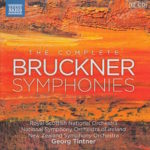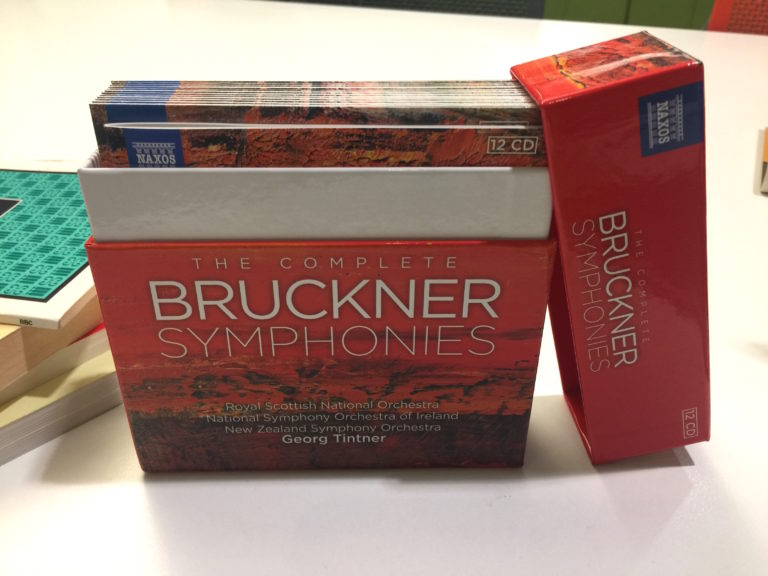 This morning’s conductor of Anton Bruckner’s Symphony No. 7 in E Major (WAB 107) is Georg Tintner (1917-1999), the Austrian-born composer/conductor with whom I was already familiar prior to starting my 144-day exploration of Bruckner’s music.
This morning’s conductor of Anton Bruckner’s Symphony No. 7 in E Major (WAB 107) is Georg Tintner (1917-1999), the Austrian-born composer/conductor with whom I was already familiar prior to starting my 144-day exploration of Bruckner’s music.
Tinter’s orchestra is the Royal Scottish National Orchestra.
I first encountered Georg Tintner (in this project) on Day 15, Symphony No. 1.
Then again on Day 31, Symphony No. 2.
Then again on Day 47, Symphony No. 3.
Then again on Day 63, Symphony No. 4.
Then again on Day 79, Symphony No. 5.
Then, most recently, on Day 95, Symphony No. 6.
First, the objective aspects of this recording:
Bruckner’s Symphony No. 7 in E Major (WAB 107) composed 1881-1883
Georg Tintner conducts
Tinter used the version “ORIGINAL 1885 VERSION, ED. R. HAAS,” according to the back of the CD sleeve
Royal Scottish National Orchestra plays
The symphony clocks in at 65:54
This was recorded at Henry Wood Hall, Glasgow, Scotland, on the 6th and 7th of May 1997
Tintner was 80 when he conducted it
Bruckner was 59 when he finished composing it
This recording was released on the Naxos label
Bruckner wrote his symphonies in four parts. The time breakdown of this particular symphony Symphony No. 7 in E Major, WAB 107), from this particular conductor (Sir Georg Solti ) and this particular orchestra (Royal Scottish National Orchestra) is as follows:
I. Allegro moderato…………………………………………………………………………20:12
II. Adagio. Sehr feierlich und sehr langsam…………………………………..21:57
III. Scherzo. Sehr schnell………………………………………………………………..10:49
IV. Finale. Bewegt, doch nicht schnell……………………………………………12:54
Total running time: 65:54
 From the exceptional liner notes written by Georg Tintner himself,
From the exceptional liner notes written by Georg Tintner himself,
Symphony No. 7 (actually his ninth symphony) is perhaps his most beautiful work and, with his Fourth Symphony, his most popular.
Bruckner’s adoration of Wagner (who was eleven years his senior) is well known. He had the premonition that his beloved “master of all masters” might soon die. This fear inspired the main tune of the second movement. The composer employed for the first time four “Wagner Tubas,” which Wagner had specially invented for the Ring Cycle. Their sound is a cross between horns and trombones; they intone a funereal melody answered by the strings.
In Bruckner’s Fifth and Eighth Symphonies, the Finale is the crowning glory o f the whole work. This is not the case in Symphony No 7. Its main weight rests in the first and second movements. The lovely Finale is in relation to the rest of the symphony more like the Finale in a Haydn symphony.
Okay when you put all this together, what do you get?
The subjective stuff:
My Rating:
Recording quality: 5
Overall musicianship: 5
CD liner notes: 5 (lengthy essays, but incomplete recording/version information)
How does this make me feel: 5
The best word to describe this performance is smooth. This was the musical equivalent of butter. It was seamless, flawless, and soothing to my ears.
Seriously, I don’t think I’ve ever a gentler, more inviting performance. This is the stuff of legend – at least, to my ears. There was space between the instruments. I could hear every one. I could feel every one.
Usually, it’s the Scherzo that stands out for me. But, in Tinter’s interpretation of Bruckner’s Seventh, it is the Allegro (Movement I). I could get lost forever in that piece of music.
How many “Huzzah!” can I award this performance?
At least two.
“Huzzah!”
“Huzzah!”
Plus, as I’ve mentioned before, this 12-CD Naxos box is a thing of beauty:

Heavy cardboard. A pop top. Fantastic CD booklet (missing only information on individual discs and what’s on them, which – granted – is important). A joy to behold.
Naxos is one of the select few labels in Classical music that you can trust based on name alone. They are like Brilliant Classics in that they are affordable, but akin to Deutsche Grammophon (DG) in their slavish adherence to quality and re-releasing important historical recordings. I dig the Naxos label.
I can tell how much time and effort the label put into The Complete Bruckner Symphonies. It’s obvious how much the folks at Naxos revered Georg Titner, his orchestra, and Bruckner’s music.
